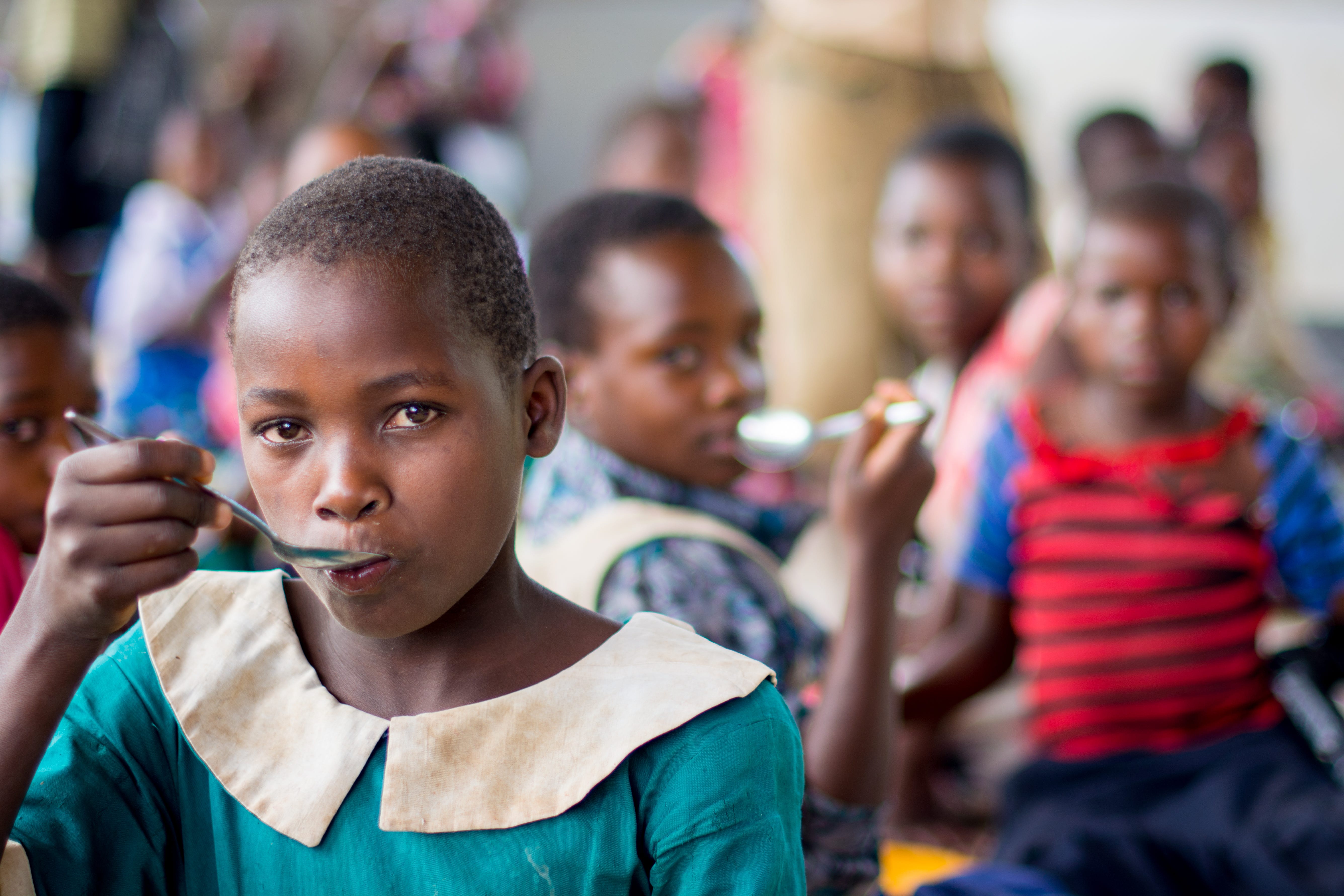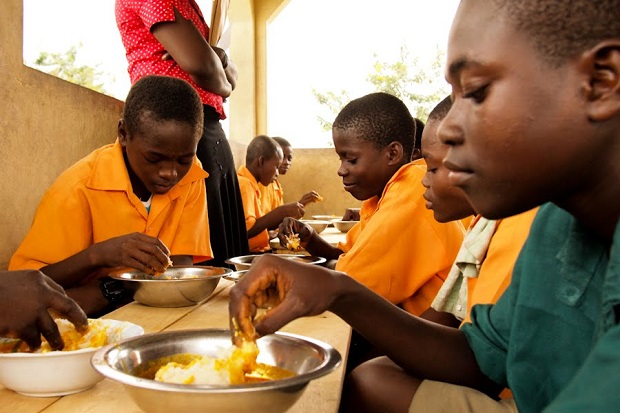

Maria Nkhoma, who lives in the southern Malawi district of Balaka, recalls a time she would miss classes because there wasn’t enough food at home. With no food, the 17-year-old who is now in secondary school would remain at home to take care of domestic chores as her parents went around in search of menial jobs to feed their five-member family.
“My parents were not harvesting enough food because our crops were usually affected by drought, and this meant I had to remain at home,” she told Devex in an interview.
Though the number of children receiving school meals globally has increased, only 27% of children in sub-Saharan Africa access a school meal and this affects learning outcomes.
A UNESCO report released last year found that school feeding has been linked to higher enrolment, but programs remain limited and rely too heavily on external funding. Governments in low-income countries currently only cover 38% of the total cost of the programs and this percentage falls to 33% in Eastern and Western Africa and only 3% in Central Africa.
Patrick Montjouridès, senior project officer and technical lead for UNESCO’s Global Education Monitoring report, said school feeding has a high return on investment with every $1 invested returning $20 through human capital and the local economy. A cost-benefit analysis of school feeding programs also found that an investment of $11 billion annually would result in a return of $156 billion through increased school attendance.
He added that UNESCO and its partners have recently included a school feeding coverage indicator as part of the official monitoring framework of Sustainable Development Goal 4 in a bid to encourage countries to invest more in school feeding programs.
“This is particularly an important indicator for Africa,” he wrote in an email. “In most regions primary school feeding coverage is above 50 percent, however in sub-Saharan Africa according to the most recent WFP data released in March 2023 school feeding coverage stands at 26 percent.”
Montjouridès said that while African countries differ widely in the extent to which they fund school feeding programs, countries that are making investments are seeing positive results.
In Rwanda, school feeding is an integral part of the government’s education policy. Launched in October 2021, the Rwanda National School Feeding Programme provides meals to 3 million children in all pre-primary primary and secondary schools. The government covers 89% of the cost with the remaining 11% covered by families who make cash or in-kind contributions, such as food items, labor, and firewood.
Sarah Colbourne, the World Food Programme’s head of communication and external partnerships, said the program has contributed to increased enrolment rates, with more students coming to and staying in school.
“Anecdotally, teachers have reported that students have more energy and participate more in class due to receiving a daily school meal,” she said.
Colbourne said WFP is complementing the national program by providing school meals to 117,000 Rwandan students in 140 schools across the most food-insecure areas through its home-grown school feeding approach.
“Cash transfers from WFP enable schools to procure fresh foods locally three days per week, adding valuable nutrients from vegetables and animal source protein, such as dried fish,” she said.
Positive indicators of school feeding have also been observed in Malawi. WFP, in collaboration with the government of Malawi, has been supporting school feeding programs in the most food-insecure districts in the country since 1999. The program supports 954,669 learners at 783 primary schools — 30% of the country’s public primary schools.
A 2019 evaluation of the program found that school meals reduced absenteeism by 5%. The program has also resulted in a sharp reduction in drop-out rates for girls from 15.6% to 5.2%.
In Madagascar, WFP has been working with the government to implement the national school feeding program for over 30 years. Aina Andrianalizaha, WFP’s national communications, advocacy and marketing officer, said the government through the Ministry of Education currently provides 11% of the program costs while WFP and other partners contribute 89%.
Andrianalizaha said in 2022, the program supported 23% of children enrolled in public schools and this contributed to a high school enrollment and retention rate. In 2022, the country’s daily school attendance rate increased to 76% up from 67% in the previous year, she said.
Andrianalizaha added that 54% of the children benefiting from the program are girls and as such, the program also helps to reduce the gender gaps in education outcomes. The total benefits of school canteens are estimated at $935 per child over the lifetime of the child, she said.
“The food provided during the school meal is a resource that is transferred directly to the parents of the students since they have saved on the cost of their equivalent on the market,” she said.
___
Source here
